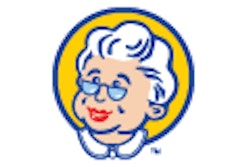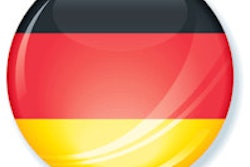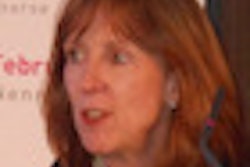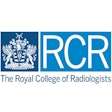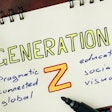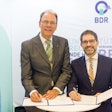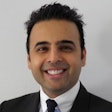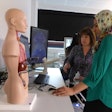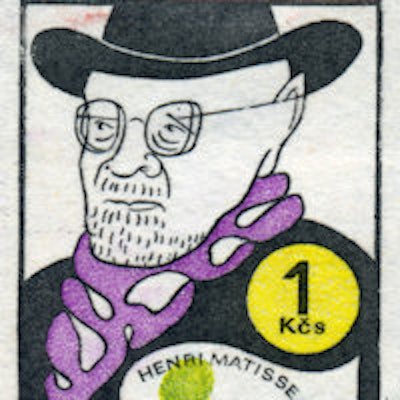
The honorary lecture at ECR 2014 by Dr. Albert De Roos from the Netherlands -- "Research in cardiac imaging: How I do it" -- was enlightening but also intriguing. The presentation was good, but it left me with some new and unanswered questions.
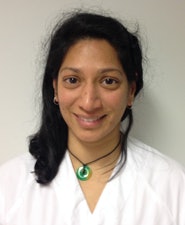 Dr. Anagha Parkar is a staff radiologist at Haraldsplass Diakonale Sykehus in Bergen, Norway, and a founding member of AuntMinnieEurope.com’s Editorial Advisory Board.
Dr. Anagha Parkar is a staff radiologist at Haraldsplass Diakonale Sykehus in Bergen, Norway, and a founding member of AuntMinnieEurope.com’s Editorial Advisory Board.De Roos, professor of radiology at Leiden University Medical Center, hailed personal motivations, creativity, and drive as the best starting point for research. He used the example of Matisse, sick in bed but still painting on the wall, as a man driven by great enthusiasm for his work. He added that for radiologists, academic promotion, prestige, and "even" financial benefits (i.e., a pay raise related to publications) are motives, but these were clearly considered to be not quite so honorable. De Roos also mentioned that it is better to start early with research, because it is not easy to catch up if one begins later in one's career.
As I was sitting and absorbing his message, it dawned upon me that there was a great cultural, and maybe a generational, difference in opinions between us. In a clinical and professional climate where productivity in radiology steadily encroaches upon research time, untiring and enthusiastic people are few and far apart. The creative and curious mind, which needs no external incentive or motivation, is a rarity. The rest of us -- the mortal ones -- do, however, need incentives. But is that necessarily a bad thing?
De Roos is Dutch. The Netherlands is a country that currently has a surplus of radiologists and where trainees have to compete very hard for jobs. In such a climate, employers can demand academic work and doctorates. Only "truly" gifted and driven radiologists do research. In countries where the job market is more humane -- e.g., in my own country of Norway -- the situation is completely different. Here, one has to encourage trainees and young radiologists to even consider research.
As I see it, incentives or motivation for "mere mortals" in radiology can be divided into three groups: nonmeasureable, somewhat measureable, and measureable.
Nonmeasureable incentives/motivation
Research leads to honor, increased respect (from coworkers and clinicians) and perhaps some "say" in topics in which one now is an expert. However, all these things are not static and definitely not guaranteed. Also, there will always be those who rightly experience or wrongfully think that they have never received the respect they deserve. This nonmeasureable incentive is difficult to "sell" to younger colleagues.
Somewhat measureable incentives/motivations
Promotions and fast track to permanent jobs may be recruitment policies in certain institutions. The Research Institute of the Norwegian Society of Radiology boldly stated in 2011: "Academic positions in the field of radiology and nuclear medicine must be held by qualified colleagues."1
However, these days productivity in radiology regularly steals time from research, and radiologists with research experience or doctorates are not always preferred. Employers often want a "workhorse" and not a creative person, though one does not exclude the other. Invariably, academic output is linked to radiology productivity.2
I would say that this incentive is somewhat measureable, because the indications (at least in Norway) are that research and academic degrees are increasingly used to differentiate between candidates. But until the hiring process in each institution is totally transparent, we will never know whether this incentive actually works or not.
Measureable incentive/motivations
This group is actually my favorite. It is objective and easy for everyone to understand. The most common ones are extra study leave days when presenting research and high wages. In Norway, it is very common to get a slight pay raise for three years after a publication. The time limit is set to encourage continued research and publications. Also, a doctorate is rewarded with a moderate, permanent pay raise.
Extra study leave days are also attractive. A chance to present and attend conferences abroad is always welcome. In Norway, it is not common to give trainees study leave for international conferences unless one has something to present, so getting involved in research and presenting abstracts are a welcome incentive. In my experience, these incentives actually work, especially for younger colleagues who still have student loans and who are rewarded for their research with traveling.
I do not think incentives such as these are bad or lead to poor-quality research. Of course the ideal researcher is the untiring, enthusiastic person who never stops questioning or creating, but such unique gems are exceptionally rare.
Research and creativity in radiology is surely the best way to preserve a strong specialty, but most European countries are struggling to conduct enough research. With the changing demographics of the medical profession, particularly the higher percentage of women radiologists, and a stronger focus on the so-called work-life balance, how can we convince younger radiologists to follow the academic path, at least for a few years? I doubt if we can still do this without incentives.
I think, unfortunately, the age of the pure, idealistic (underpaid) researcher has passed. But all is not lost, if we manage to encourage radiologists to get involved in research and more people actually bother, is it not a win-win situation? After all, idealism and drive are not automatic guarantors of quality. The research will speak for itself, regardless of what motivated the author. We do not all have to be Matisse.
Dr. Anagha Parkar is a radiologist at Haraldsplass Diakonale Sykehus in Bergen, Norway. She is also a member of AuntMinnieEurope.com's Editorial Advisory Board.
The comments and observations expressed herein do not necessarily reflect the opinions of AuntMinnieEurope.com, nor should they be construed as an endorsement or admonishment of any particular vendor, analyst, industry consultant, or consulting group.
References
- Rørvik JT, Kløw NE. Strategy plan for radiological research. Tidsskr Nor Laegeforen. 2011;9(131):1417-1418.
- Eschelman DJ, Sullivan KL, Parker L, Levin DC. The relationship of clinical and academic productivity in a university hospital radiology department. AJR Am J Roentgenol. 2000;174(1):27-31.




